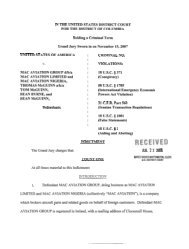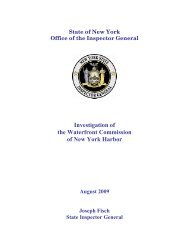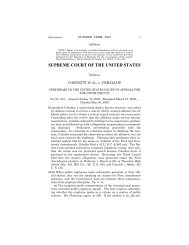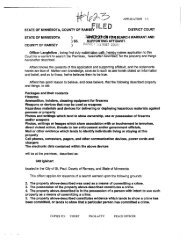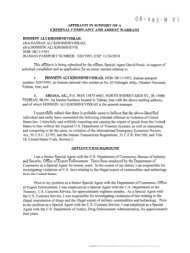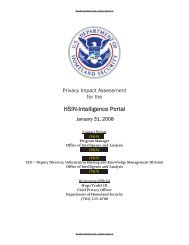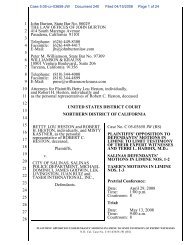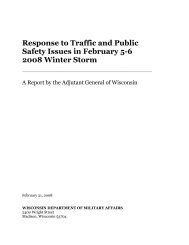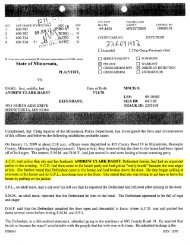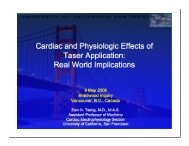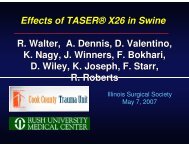TASER Electronic Control Devices Review Of Safety Literature
TASER Electronic Control Devices Review Of Safety Literature
TASER Electronic Control Devices Review Of Safety Literature
You also want an ePaper? Increase the reach of your titles
YUMPU automatically turns print PDFs into web optimized ePapers that Google loves.
Other Stimulants<br />
With the methamphetamine epidemic there is concern that drug abusers using<br />
this and other illegal stimulants could be at increased risk for electrocution from<br />
the <strong>TASER</strong> devices. However, a small animal study found no <strong>TASER</strong> device induced<br />
VF even in the presence of various similar stimulating agents. 90 Also, the<br />
large study from the UK (United Kingdom) Home <strong>Of</strong>fice found no increase in risk<br />
with common drugs. 91<br />
Cardiac electrophysiologists routinely use intravenous stimulants (such as isoproterenol)<br />
to help induce ventricular tachycardias in their electrophysiology labs.<br />
Hence, a typical first blush reaction is to assume that stimulants increase the risk<br />
from a <strong>TASER</strong> ECD or external electrical shock in general. However, stimulants<br />
— including isoproterenol — tend to actually increase the amount of electrical<br />
current required to induce arrhythmias. 92 The same is true with other stimulants<br />
such as phenylephrine. 93<br />
This apparent contradiction stems from the fact that EPs (electrophysiologists)<br />
use strong enough pacing pulses (in the electrophysiology lab) directly delivered<br />
to a tiny spot on the inside of the heart. So, the decreased sensitivity to electrical<br />
stimulation from an adrenergic stimulant is irrelevant in the EP lab — it is<br />
trumped by the highly focused and concentrated internal current delivery. However,<br />
this same decreased sensitivity (from adrenergic stimulants) makes externally<br />
applied currents much safer. In general, stimulants actually increase the<br />
safety margin for externally applied electrical currents, such as by ECDs.<br />
And, it has long been known that a direct catecholamine (internal stimulants)<br />
challenge of epinephrine and norepinephrine appears to only lower the VF<br />
threshold for the first 3 to 7 minutes (which in a custodial related death is usually<br />
before the arrival of law enforcement and EMS to a call for strange or bizarre behavior),<br />
after which time the VF threshold actually goes up. 57 Thus, the person,<br />
ironically, is probably safer from electrocution than the responding law enforcement<br />
officers and EMS personnel once they arrive on the scene.<br />
Note that this field ECD application situation is far different from someone quickly<br />
ingesting a large drug dosage in front of law enforcement officers and then struggling<br />
against the officers’ attempts at capture, control, and restraint. That could<br />
be dangerous with some stimulants for the first few minutes as was shown in an<br />
absolute worst case situation of low body weight, barb inserted under the skin,<br />
barb placed over the heart, and a strong pure stimulant (epinephrine — with no<br />
protective effects such as those of cocaine) given intravenously. 56<br />
Alcohol<br />
A study of intoxicated adults showed that there were no cardiac effects and no<br />
damage from a prolonged (15 second) <strong>TASER</strong> ECD application. 94<br />
42




